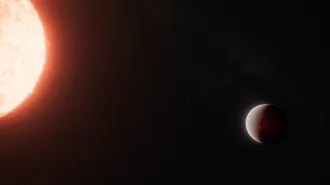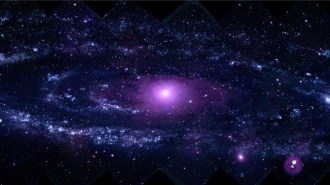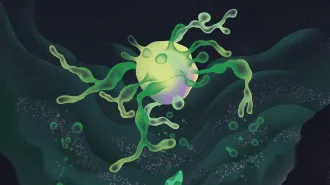Over the past few years, astronomers have reported large objects lurking in the Kuiper belt, a distant region of the solar system that seems to be a reservoir for comets. Some of the objects seemed to be half the size of Pluto. But observations now suggest that many are much smaller than previously estimated. If confirmed, the findings will force astronomers to drastically lower their estimate of the total mass of the realm of icy objects that orbit the sun beyond Neptune.

Objects in the Kuiper belt range from dust-grain size to more than 1,000 kilometers across. Pluto, at 2,400 km in diameter, is considered by many astronomers to be the largest member of the Kuiper belt.
The dimensions of most belt objects have never been measured directly because the objects are too small and too distant. Astronomers calculate the size and mass of such an object on the basis of its brightness and of an estimate of how reflective its surface is. Because astronomers consider comets to be former Kuiper belt objects pulled into the inner solar system and because observations of comets show that they reflect only 4 percent of the light that hits them, the scientists assumed that Kuiper belt objects are similarly reflective.
But recent observations of eight Kuiper belt objects show that they’re much more reflective than comets. John A. Stansberry of the University of Arizona in Tucson and his research team used the Spitzer Space Telescope’s infrared vision to measure the temperature of the objects. Since sunlight is their only heat source, the temperatures indicate what proportion of incoming sunlight the objects absorb. Stansberry reported the results on Nov. 12 in Louisville, Ky., at a meeting of the American Astronomical Society’s Division of Planetary Sciences.
The objects are three times as reflective as comets, which means that earlier size calculations were considerable overestimates. The researchers had assumed that large surface areas were reflecting very little light, but the new data indicate that there’s more light coming from less area.
“The sizes of Kuiper belt objects are about 60 percent as large as we would have guessed,” Stansberry says.
This finding will force astronomers to slash their estimates of the Kuiper belt’s total mass by as much as a factor of five, which will deepen a longstanding puzzle. Astronomers have asserted that the belt once contained much more mass than it does now but haven’t explained where much of the missing material went. The ejection of objects from the belt in response to the gravitational pulls of Neptune and Jupiter fails to account for all the missing mass.
The evidence that Kuiper belt objects are unexpectedly reflective is “quite compelling,” says Joseph M. Hahn of St. Mary’s University in Halifax, Nova Scotia.
Scott J. Kenyon of the Harvard-Smithsonian Center for Astrophysics in Cambridge, Mass., recently analyzed the sizes of Kuiper belt objects. “The work seems good,” he says of Stansberry’s study, “but it is hard to generalize to all Kuiper belt objects from eight of them.”
The picture is complicated, he says, by the fact that various classes of Kuiper belt objects might differ in how reflective they are.







